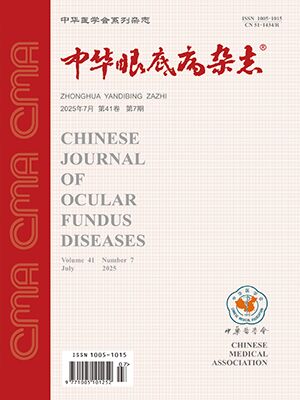Objective To evaluate the anatomic and visual outcomes of idiopathic macular holes treated with triamcinolone (TA)assisted posterior vitreous detachment (PVD) and then internal limiting membrane (ILM) peeling without any dye. Methods Twenty-three patients (23 eyes) with stage Ⅱ and Ⅲ idiopathic macular holes were enrolled. The best-corrected visual acuity (BCVA), the lens, the duration, stage and size of the macular holes were measured before and after the surgery. The preoperative BCVA was 0.04 to 0.40; the logMAR was 0.398 to 1.398 with the mean of 0.846 plusmn;0.310. All surgery involved TAassisted PVD and then ILM peeling without any dye. Combined cataract extraction with vitrectomy was performed on 5 eyes. The follow-up ranged from 6 to 16 months with the mean of 9 months. Results Anatomic macular hole closure was achieved in 22 eyes (95.7%) at the first month after surgery and in 23 eyes (100。0%) finally. At the 6th months after surgery, the BCVA was 0.12 to 0.90, logMAR was 0.046 to 0.921 with the mean of 0.410 plusmn;0.209, compared with preoperative BCVA, the difference was statistically significant (t=6.636, P<0.0001). BCVA increased in 21 eyes (91.3%) and kept unchanged in 2 eyes (8.7%). There are 1 -3 spots self-limited bleeding on the retinal surface when the ILM was peeled in 5 eyes. Postoperative complications included progression of cataract in 9 patients and transient intraocular pressure elevation in 6 patients. Conclusions TA-assisted PVD and then ILM peeling without any dye is an effective and safe surgical technique in stage Ⅱ and Ⅲ idiopathic macular hole.
Citation: 刘志雄,吴国基,康克明,林春堤,王晓波. Stage Ⅱ and Ⅲ idiopathic macular holes treated by triamcinolone-assisted posterior vitreous detachment and internal limiting membrane peeling without any dye. Chinese Journal of Ocular Fundus Diseases, 2011, 27(4): 346-349. doi: Copy
Copyright © the editorial department of Chinese Journal of Ocular Fundus Diseases of West China Medical Publisher. All rights reserved




